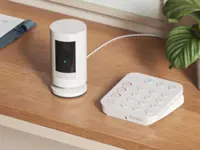A first for Apple, the device will compete with Amazon’s Echo Show and Echo Hub smart displays, as well as Google’s Nest Hub. — AFP
Apple Inc, aiming to catch up with rivals in the smart home market, is nearing the launch of a new product category: a wall-mounted display that can control appliances, handle videoconferencing and use AI to navigate apps.
The company is gearing up to announce the device as early as March and will position it as a command center for the home, according to people with knowledge of the effort. The product, code-named J490, also will spotlight the new Apple Intelligence AI platform, said the people, who asked not to be identified because the work is confidential.




